Astronaut Underwear, Dancing Robot Wow Stargazers in NYC
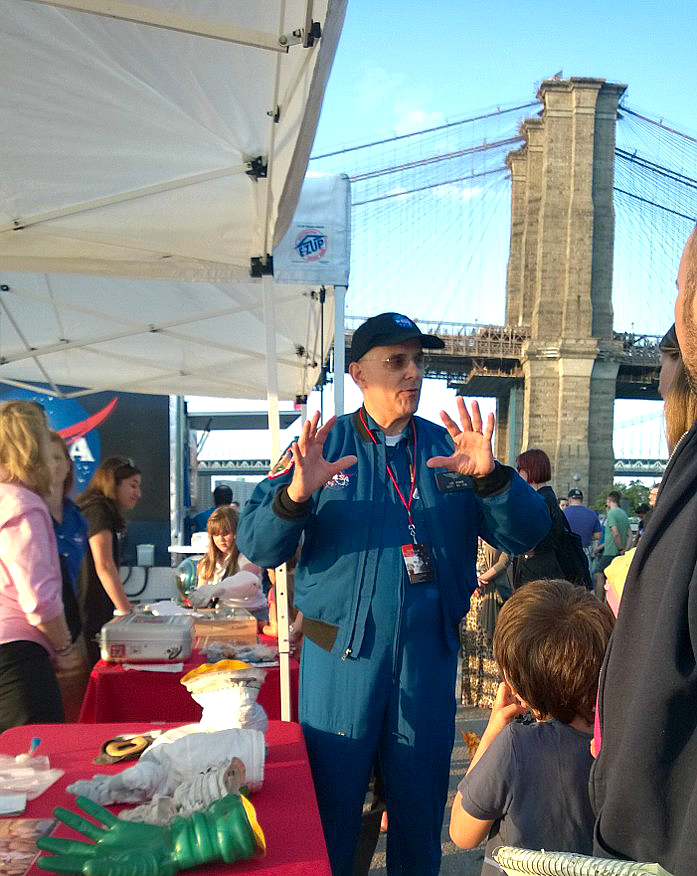
NEW YORK — NASA landed in Brooklyn this weekend to bring space down to Earth during the World Science Festival with a family night of "stargazing and music to celebrate the dance of the planet," according to event organizers.
Stargazers youngs and old alike were drawn to Brooklyn Bridge Park Saturday night (May 30), to gaze at stars and planets through high-powered Celestron telescopes and to learn more about the stars from those who once lived among them — astronauts Lee Morin and Nicole Stott.
Around 7:30 p.m., as light from the sun still overwhelmed light from the stars, Morin walked around the park wearing a bright blue coverall suit and a jacket adorned with American flag and NASA patches. Kids crowded around him, awestruck to be so close to a real, live spaceman. But they definitely weren't lost for words. Morin was bombarded with questions from little (and a few big) voices, wondering what it was like to travel outside Earth's boundaries. [Related: NASA Satellites Sing at World Science Festival]
Young and other NASA officials answered each question carefully, making sure each curious person understood what it's like to walk among the stars.
Even as Morin walked away, families continued to swarm booths displaying out-of-this-world items like freeze-dried shrimp cocktail and "thermal underwear" laced with tiny tubes that carry ice-cold water to keep astronauts from overheating.
But that was just the beginning. As the sun began to set, science enthusiasts wandered toward a stage set up along the waterway to learn more about worlds beyond Earth.
All about the sun
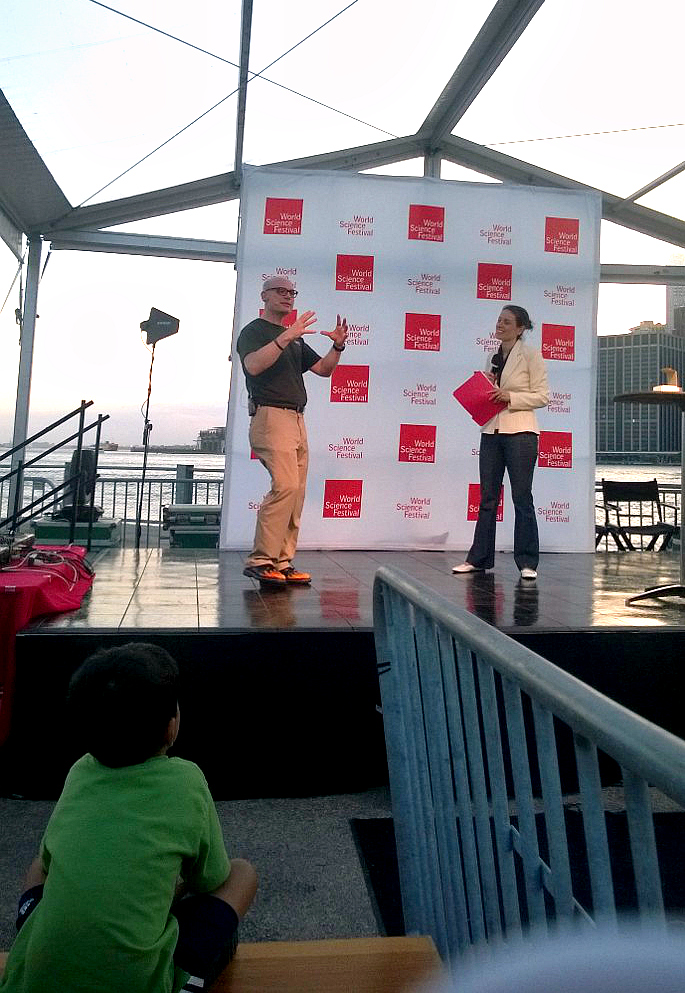
As gorgeous images of the sun flashed across a television screen, Alex Young, a solar astrophysicist at NASA's Goddard Space Flight Center, took the stage.
Get the Space.com Newsletter
Breaking space news, the latest updates on rocket launches, skywatching events and more!
Young dedicated his life to the study of the sun, he said, because he loves the stars. And studying "our own special star" allows him to learn about them all.
Young discussed some of the dangerous qualities of the sun, like sun flares and coronal mass ejections (CMEs) that spurt streams of solar plasma into space.
Among the most pressing questions about the sun was "how do solar flares affect us?" Young's answer: not too badly. He says CMEs and solar flares, even massive flares like the one that caused radio blackouts on Cinco de Mayo, won't hurt you. For the most part, they'll just cause a short blackout of electrical signals.
The audience seemed relieved at that answer and Young's presentation set the stage for a running joke throughout the night — that every blip in lighting or electronics was the result of a solar flare.
Extraterrestrial Life
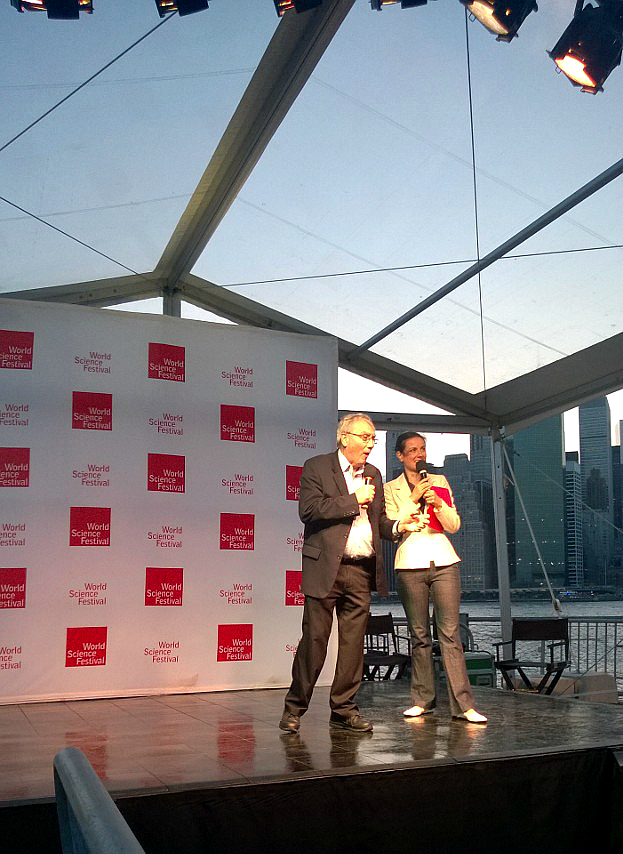
Does extraterrestrial life exist? It's the most intriguing scientific question of our time, according to Mario Livio, an astronomer at The Space Telescope Science Institute.
And the audience seemed to agree.
Kids sat in apt attention as Livio explained how astronomers use technology both on Earth and in space to search for extraterrestrial life, including one little boy who asked "are aliens real" so aggressively it seemed he wouldn't take no for an answer. Livio quickly assured him that no, alien spaceships aren't being held at Area 51 and scientists wouldn't cover up discovery of life outside Earth, as it would likely be the biggest scientific breakthrough of their lifetime.
Despite his assurance that no scientists have found alien life yet, Livio claimed they're so close he expects a breakthrough within the next few decades. If not a super-intelligent society billions of years more advanced than humans (as another boy postulated), Livio believes many in the audience will someday see scientists discover small signs of life on other planets, like microbes or plants.
"We're not looking for crocodiles," he said at the presentation. [The Life on Mars Search: Photo Timeline]
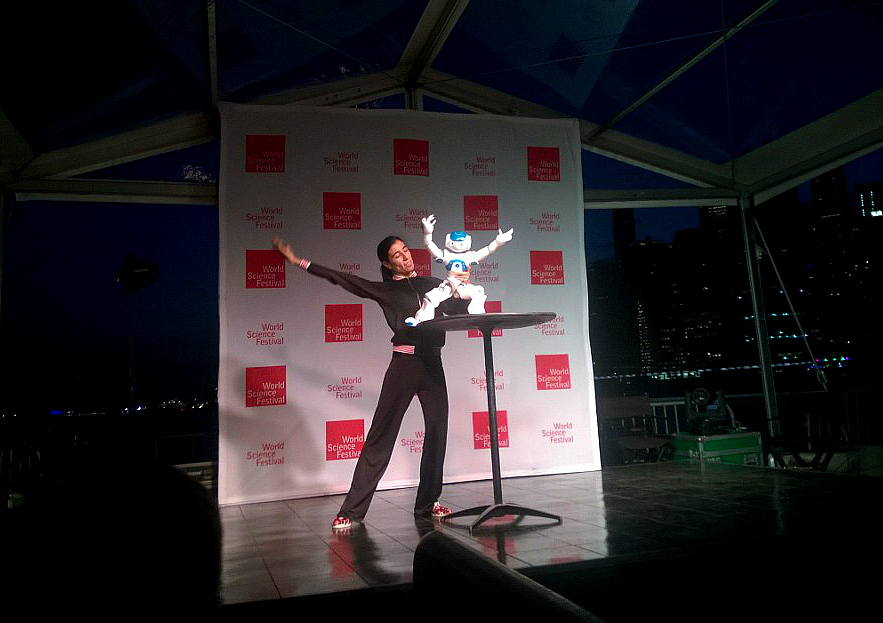
Dancing robots
Possibly the most anticipated event of the night — according to excited screams and children literally bouncing out of their seats — was an excerpt from choreographer Blanca Li's upcoming ballet ROBOT.
Li took the stage with a small, blue-and-white robot named Nao and wowed both children and adults as she and the machine danced together, as much in sync as would be a human pair. Nao and her partner showed off the elegant steps of accomplished ballerinas, not the disjointed movements typically associated with robot "dancing."
The full performance, starring seven Nao robots and eight beautiful dancers, debuts at The Brooklyn Academy of Music on June 9 and runs until June 14.
Space trivia
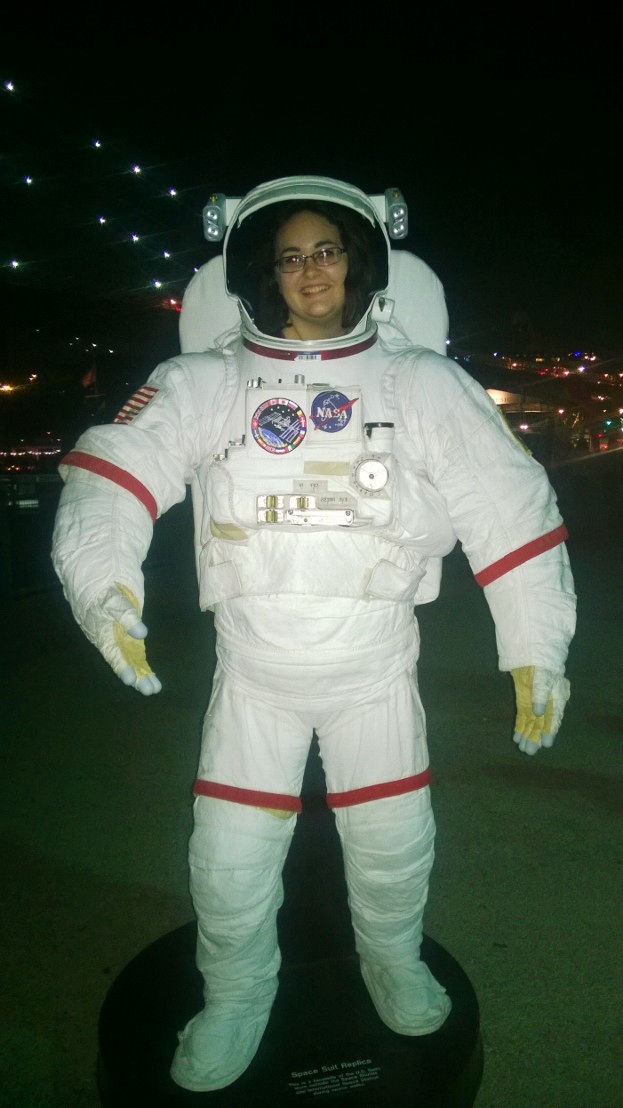
The evening wrapped up with space trivia hosted by Astronomy On Tap — an organization that brings presentations by astronomers to bars around the world, and uses the slogan "science is even better with beer."
The trivia presenter, aptly named DJ Carly Sagan, quizzed both Young and the audience on knowledge they'd learned throughout the night.
New York City residents and visitors (over 21, of course) can find upcoming Astronomy On Tap events here.
In addition to watching the presentations, participants had the opportunity to gaze through telescopes at celestial sights like Jupiter and the moon, learn about the life of a star, take a photo inside a spacesuit, and see real footage from the ISS.
Follow Kasandra Brabaw on twitter at @KassieBrabaw. Follow us @Spacedotcom, Facebook and Google+. Original article on Space.com.
Join our Space Forums to keep talking space on the latest missions, night sky and more! And if you have a news tip, correction or comment, let us know at: community@space.com.

Kasandra Brabaw is a freelance science writer who covers space, health, and psychology. She's been writing for Space.com since 2014, covering NASA events, sci-fi entertainment, and space news. In addition to Space.com, Kasandra has written for Prevention, Women's Health, SELF, and other health publications. She has also worked with academics to edit books written for popular audiences.










